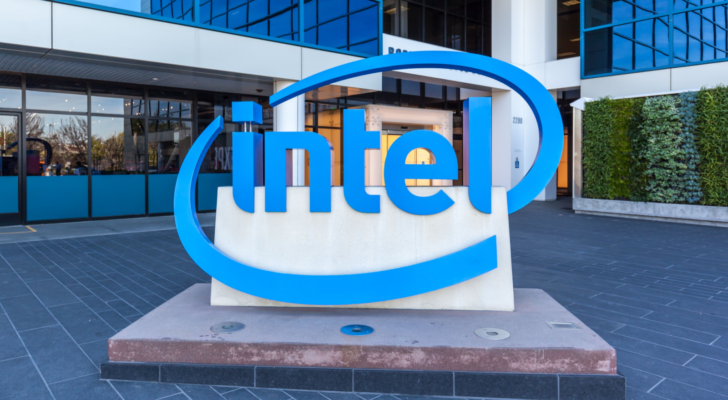Don’t Miss the Boom: 7 Large-Cap Stocks Set to Explode Higher
Wall Street has been very upset about the results of the Federal Reserve meeting earlier this month. However, there are still many reasons to be optimistic about U.S. stocks — especially safer large-cap stocks — going forward. For one, I don’t think that the results of the meeting were actually as hawkish as the Street believes. At the meeting, seven of the 19 Fed members, or nearly 40% of them, did not expect the central bank to increase rates again this year.
In addition, we have to consider Chairman Jerome Powell left the door open to keeping interest rates unchanged this year. So the panic by some and the large increases in Treasury rates appear quite overdone. Also worth noting, despite the hand-wringing, rates are still not historically very high. In late 1994, for example, a time period that reminds me very much of our own now, the interest rate on the 10-year Treasury bond was nearly 8%, as compared to the current yield of about 4.5%. With all of that in mind, here are seven large-cap stocks to buy to prepare for the market’s coming rebound.
Large-Cap Stocks: ServiceNow (NOW)

Source: Sundry Photography / Shutterstock.com
ServiceNow (NYSE:NOW) saves companies a great deal of money by automating IT processes, and it is actively integrating artificial intelligence into multiple products.
InvestorPlace - Stock Market News, Stock Advice & Trading Tips
In fact, NOW recently began including AI in all of its major products. Specifically, the firm’s AI will “add new text creation and summarization features and an interactive chatbot interface to help workers get to relevant information more quickly,” CIO reported. It also appears as though the inclusion of AI is going to greatly enhance the capabilities and user-friendliness of NOW’s offerings. Also noteworthy is that a very impressive 98% to 99% of NOW’s customers have renewed their deals with NOW over the past year, while its top line is increasing at a compound annual growth rate of around 25%.
Amazon (AMZN)

Source: Tada Images / Shutterstock.com
Amazon’s (NASDAQ:AMZN) decision to invest as much as $1.4 billion in AI start-up Anthropic is positive for AMZN stock, says DA Davidson. The deal will boost AMZN”s ability to compete with Alphabet (NASDAQ:GOOG, NASDAQ:GOOGL) and Microsoft (NASDAQ:MSFT).
Moreover, DA Davidson thinks that the deal could increase the revenue of Amazon’s cloud business by as much as 20% over the longer term while enabling the firm to cut its expenses and improve its e-commerce business. Additionally, boding well for the technology’s ability to improve the juggernaut’s performance over the longer term, CEO Andy Jassy intends to invest as much as $4 billion in AI,
While the U.S. Federal Trade Commission (FTC) and 17 states have filed a lawsuit against AMZN over alleged antitrust violations, such lawsuits usually take multiple years to be resolved, and the current FTC head’s record when it comes to suing large companies is mixed at best. Therefore, I believe that investors should use the recent pullback of AMZN stock as a buying opportunity.
Large-Cap Stocks: Intel (INTC)

Source: JHVEPhoto / Shutterstock.com
Intel (NASDAQ:INTC) continues to make important strides on the AI front, as well. In fact, the company reported that its upcoming Intel Core Ultra processors, set to debut in December, would enable PCs to conduct ” AI acceleration and local inference” in a “power efficient” manner.
Meanwhile, Intel, which is building two chip factories in Arizona, is well-positioned to get a big chunk of the $52.7 billion that the U.S. plans to give to chip makers “for U.S. semiconductor production, research, and workforce development.” And INTC ‘s top and bottom lines are likely to get big boosts from the company’s efforts to manufacture chips for other firms. Finally, demand for Intel’s Gaudi 2 AI chips has reportedly been “soaring” in China, boding well for their outlook in the Asian country and in other markets.
Intel’s forward price-earnings ratio of 19 is quite low, given all of its powerful, positive catalysts.
Netflix (NFLX)

Source: izzuanroslan / Shutterstock.com
Netflix’s (NASDAQ:NFLX) valuation has become quite attractive. At the moment, its forward price-earnings (P/E) ratio is fairly low at 24.9. Plus, the company should benefit from a slowdown of the “revenge travel” trend. After all, if consumers are spending a great deal of time traveling, they’re less likely to spend time and money watching TV, and the opposite is true as well.
And with Netflix busy launching its ad-supported tier, the company is likely to get a boost from a rebound of U.S. ad spending. Indeed, last quarter U.S. media ad sales climbed 4.4%, while such spending for all of 2023 is expected to advance 5.2%. Also noteworthy is that NFLX recently said that its “revenue is building” as a result of its crackdown on password sharing. In addition, over the longer term, NFLX still has a great deal of room to grow, as the penetration of streaming in the U.S. is still below 40% and Netflix’s 2022 sales represented just 5% of the estimated “total addressable market for streaming.”
These factors make NFLX one of the best large-cap stocks to buy.
Large-Cap Stocks: Ares Management (ARES)

Source: shutterstock.com/CC7
Ares (NYSE:ARES) is an alternative asset manager. With elevated inflation and interest rates scaring away many conservative investors, the demand for “alternative assets” that can outperform bonds and provide more peace of mind than stocks is likely to be high.
Moreover, Ares has a direct lending business that provides loans “to small-to-medium-sized companies.” Amid high-interest rates, many such firms are likely to be seeking loans on more favorable terms than conventional lenders can provide, and Ares may be able to fulfill that role in some cases.
Last quarter, the firm’s top line jumped to $1.086 billion from $605.8 million during the same period a year earlier, while its operating income climbed to $256.1 million from $108.6 million in Q2 of 2022. “During the second quarter, our business continued to deliver strong and consistent growth with management fees, fee-related earnings and after-tax realized income all around 20% or better on a year-over-year basis,” Ares CEO Michael Arougheti said during the company’s Q2 earnings call.
ARES stock has a reasonable forward price-earnings ratio of 20.7 times.
Cheniere Energy (LNG)

Source: IgorGolovniov / Shutterstock.com
Cheniere Energy (NYSEAMERICAN:LNG) exports natural gas from the U.S. to other countries. With transportation rapidly electrifying and renewables and batteries still accounting for a relatively small amount of electricity generation in most nations, the demand for natural gas overseas should intensify going forward.
What’s more, the European Union’s imports of natural gas have surged 25% in the wake of the Russia-Ukraine War, and America has become the bloc’s largest supplier of fossil fuel. Also noteworthy is that China’s liquid natural gas imports climbed 20% year-over-year last quarter. Given all of these factors, Cheniere is likely to continue to obtain fairly high prices for its liquid natural gas in the coming quarters.
Although Cheniere’s top line dropped 45% year-over-year last quarter amid a tough comparison due to the outbreak of the Russia-Ukraine war in 2022, the company’s bottom line actually soared to $1.37 billion last quarter from $741 million in Q2 of 2022. Moreover, the firm raised its 2023 EBITDA outlook, excluding certain items, to $8.3 billion-$8.8 billion from $8 billion-$8.5 billion. LNG stock has a very low forward price-earnings ratio of 13.25 times.
Large-Cap Stocks: Alphabet (GOOG, GOOGL)

Source: IgorGolovniov / Shutterstock.com
Much more than Netflix, Alphabet is poised to benefit from strong digital ad spending growth. Last quarter, U.S. digital ad spending jumped 8.7% versus the same period a year earlier, outpacing the 4.4% increase in overall ad spending. And in 2024, overall ad spending is expected to surge 8%, indicating that digital ad revenue will soar by more than 10% next year.
Also encouraging is the fact that Alphabet is improving the functionality of its AI chatbot, Bard. Specifically, Bard “can now connect to user’s Google apps and services.” The change should increase the utilization of Google’s services, raising the company’s ad revenue. Moreover, Bard should also create other, new revenue opportunities for the firm. Given Alphabet’s upcoming, positive catalysts, the company’s forward price-earnings ratio of 19.4 is quite low.
On the date of publication, Larry Ramer held a long position in INTC. His wife held a long position in NOW. The opinions expressed in this article are those of the writer, subject to the InvestorPlace.com Publishing Guidelines.
Larry Ramer has conducted research and written articles on U.S. stocks for 15 years. He has been employed by The Fly and Israel’s largest business newspaper, Globes. Larry began writing columns for InvestorPlace in 2015. Among his highly successful, contrarian picks have been PLUG, XOM and solar stocks. You can reach him on Stocktwits at @larryramer.
More From InvestorPlace
Musk’s “Project Omega” May Be Set to Mint New Millionaires. Here’s How to Get In.
ChatGPT IPO Could Shock the World, Make This Move Before the Announcement
The Rich Use This Income Secret (NOT Dividends) Far More Than Regular Investors
The post Don’t Miss the Boom: 7 Large-Cap Stocks Set to Explode Higher appeared first on InvestorPlace.
